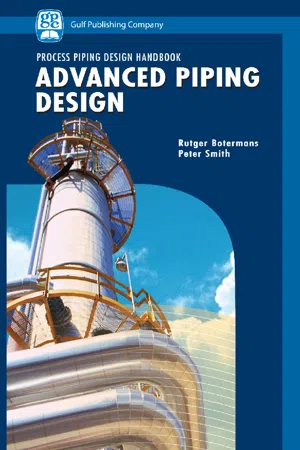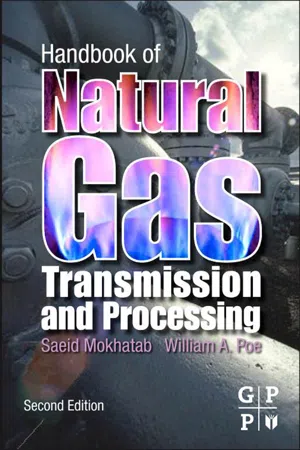Compressor
A compressor is a mechanical device that increases the pressure of a gas by reducing its volume. It is commonly used in various applications, such as refrigeration, air conditioning, and industrial processes, to compress and transport gases. Compressors come in different types, including reciprocating, rotary, and centrifugal, each suited for specific purposes.
5 Key excerpts on "Compressor"
- eBook - ePub
- D. Paul Mehta, Albert Thumann(Authors)
- 2021(Publication Date)
- River Publishers(Publisher)
...Major subsystems include the Compressor, prime mover, controls, treatment equipment and accessories, and the distribution system. The Compressor is the mechanical device that takes in ambient air and increases its pressure. The prime mover powers the Compressor. Controls serve to regulate the amount of compressed air being produced. The treatment equipment removes contaminants from the compressed air and accessories keep the system operating properly. Distribution systems are analogous to wiring in the electrical world-they transport compressed air to where it is needed. Compressed air storage can also serve to improve system performance and efficiency. Figure 12-1 shows a representative industrial compressed air system and its components. TYPES OF AIR CompressorS Several types of air Compressors are available in the market today. Each type is specially designed to best operate under some pre-set operating conditions. As shown in Figure 12-2, there are two basic Compressor types: positive-displacement and dynamic. In the positive-displacement type, a given quantity of air or gas is trapped in a compression chamber and the volume which it occupies is mechanically reduced, causing a corresponding rise in pressure prior to discharge. Dynamic Compressors impart velocity energy to continuously flowing air or gas by means of impellers rotating at very high speeds. The velocity energy is changed into pressure energy both by the impellers and the discharge volutes or diffusers. The two main types of Compressors that are commonly used are the reciprocating and the screw Compressors. Both of these Compressors are classified as positive displacement Compressors. The reciprocating Compressors compress air with the use of a piston/cylinder assembly. Consecutive quantities of air are trapped in the cylinder. The piston (driven by the electric motor) reduces the volume of the air causing its pressure to rise...
- eBook - ePub
- Peter Smith, Rutger Botermans(Authors)
- 2013(Publication Date)
- Gulf Publishing Company(Publisher)
...CHAPTER 3 Compressors 3.1 Introduction Compressors are the mechanical means to increase pressure and transport a vapor from one location to another, in the same way that a pump increases pressure to transport a liquid through a piping system. The following text is not intended to influence the selection of a Compressor but to highlight certain issues that must be considered when laying out the suction and discharge pipework to the Compressor. 3.2 Types of Compressors Two basic types of Compressors are used in process plants: reciprocating and centrifugal. Each type of Compressor has the specific duty to take in the vapor at low pressure, compress it, and discharge the vapor at a higher pressure. The quantity of vapor to be moved and the discharge pressure usually are the deciding factors when selecting the type Compressor to be used. 3.2.1 Reciprocating Reciprocating compression is the force converted to pressure by the movement of the piston in a cylindrical housing. These machines generally are specified for transporting lower volumes of vapor than centrifugal Compressors. If several stages of compression are employed, extremely high pressures can be achieved. Because of their reciprocating action, these machines cause piping systems that are not properly designed and supported to pulsate, vibrate, and generate fatigue that may result in fracture and system failure. Therefore, care should be taken with the materials of selection and method of jointing, and there must be sufficient flexibility in the piping system to keep the loads on the nozzles of the Compressor to a level that is acceptable to the manufacturer’s recommendations. 3.2.2 Centrifugal Centrifugal compression is the force converted to pressure when a gas is ejected by an impeller at increasing velocity. Generally, centrifugal Compressors are specified when large quantities of vapor have to be transported through the piping system...
- eBook - ePub
Hydraulics and Pneumatics
A Technician's and Engineer's Guide
- Andrew Parr(Author)
- 2011(Publication Date)
- Butterworth-Heinemann(Publisher)
...A high shaft rotational speed is needed and the volume to input power ratio is lower than any other type of Compressor. Figure 3.12 Non-positive displacement Compressors (blowers) An axial Compressor comprises a set of rotating fan blades as shown in Figure 3.12b. These produce very large volumes of air, but at low pressure (less than one bar). They are primarily used for ventilation, combustion and process air. Output pressures of both types of dynamic Compressor can be lifted by multistage Compressors with intercoolers between stages. Diffuser sections reduce air entry velocity to subsequent stages, thereby converting air kinetic energy to pressure energy. Positive displacement Compressors use oil to lubricate the close machined parts and to maintain the air seal. Dynamic Compressors have no such need, and consequently deliver very clean air. Air receivers and Compressor control An air receiver is used to store high-pressure air from the Compressor. Its volume reduces pressure fluctuations arising from changes in load and from Compressor switching. Air coming from the Compressor will be warm (if not actually hot!) and the large surface area of the receiver dissipates this heat to the surrounding atmosphere. Any moisture left in the air from the Compressor will condense out in the receiver, so outgoing air should be taken from the receiver top. Figure 3.13 shows essential features of a receiver. They are usually of cylindrical construction for strength, and have a safety relief valve to guard against high pressures arising from failure of the pressure control scheme. Pressure indication and, usually, temperature indication are provided, with pressure switches for control of pressure and high-temperature switches for remote alarms. Figure 3.13 Compressed air receiver A drain cock allows removal of condensed water, and access via a manhole allows cleaning...
- Saeid Mokhatab, William A. Poe(Authors)
- 2012(Publication Date)
- Gulf Professional Publishing(Publisher)
...Due to the number of variables involved, the task of choosing the optimum driver can be quite involved, and a comparison between the different types of drivers should be done before a final selection is made (Lubomirsky et al., 2010). An economic feasibility study is of fundamental importance to determine the best selection for the economic life of a project. Furthermore, it must be decided whether the compression task should be divided into multiple Compressor trains, operating in series or in parallel (Santos, 1997, 2004). This chapter presents a brief overview of the two major types of Compressors, a procedure for calculation of the required compression power, as well as additional and useful considerations for the design of Compressor stations. All performance calculations should be based on Compressor suction and discharge flange conditions. For reciprocating Compressors, pressure losses at the cylinder valves as well as the pressure losses in pulsation dampeners have to be included in the calculation. Additional losses for process equipment such as suction scrubbers, intercoolers, and aftercoolers have to be accounted to define Compressor design conditions. 11.2 Reciprocating Compressors A reciprocating Compressor is a positive displacement machine in which the compressing and displacing element is a piston moving linearly within a cylinder. The reciprocating Compressor uses automatic spring-loaded valves that open when the proper differential pressure exists across the valve. Figure 11-1 illustrates the action of a reciprocating Compressor using a theoretical pressure-volume (PV) diagram. In position A, the suction valve is open, and gas will flow into the cylinder (from point 1 to point 2 on the PV diagram) until the end of the reverse stroke at point 2, which is the start of compression. At position B, the piston has traveled the full stroke within the cylinder, and the cylinder is full of gas at suction pressure. Valves remain closed...
- eBook - ePub
- A. Barber(Author)
- 1997(Publication Date)
- Elsevier Science(Publisher)
...At high altitude, because of the reduced air density, the Compressor efficiency and capacity is reduced. High humidity can result in large quantities of water which have to be disposed of. • Methods of cooling available – availability of cooling water or ambient temperature for air cooling. The possibility of using the waste heat for space heating or for process heating should be considered. • Environmental factors – noise and vibration. Special foundations may be required, particularly with reciprocating Compressors. • Requirements for skilled maintenance personnel. The actual means chosen for compressing the air is probably less important to the purchaser of a complete unit than is the purchase price and running costs. For small Compressors used on construction sites or for intermittent stationary use, initial cost is the important parameter. For large, permanent, factory installations, running costs (particularly the off-load costs) are more important. The development of sophisticated methods of control allows almost any kind of Compressor to be used efficiently. This means that the emphasis shifts from the Compressor per se to the characteristics of the complete packaged installation. Figure 5 shows the broad map of application of the various types; there is much overlap. Table 1 is a broad description of characteristics. It should not be taken to give clear boundaries between the different types. FIGURE 5 – Generalised performance envelopes for different types of Compressors. Reciprocating Compressors Reciprocating Compressors are suitable for operating over a very wide range of speeds, with a practical maximum of about 10 bar delivery pressure from a single-stage unit, and up to 70 bar for a two-stage machine. Multi-stage reciprocating Compressors may be built for special purposes capable of supplying delivery pressures up to and in excess of 700 bar...




